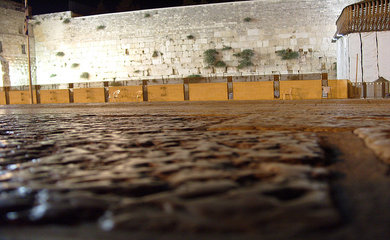Among the world’s Jews, a gender war looms at Judaism’s holiest site.
The Women of the Wall are a group of Jewish women who have been holding monthly services at the Kotel, the Western Wall, in Jerusalem. Though this might seem innocuous, the group has attracted arrests and worldwide media attention for their peculiar form of religious civil obedience. The Women of the Wall pray in traditionally male garb – that is to say, they wear the same tallit (prayer shawls) and tefillin (phylacteries) to pray. Among liberal Jews, such practices are common, unremarkable, even. But this, however, is Jerusalem.
The Women of the Wall have been butting heads with Israeli law – a 1967 Protection of Holy Places Law which bars “any religious ceremony that is not performed according to the custom of the place.” At the Kotel, where Haredi (ultra Orthodox) religious practice reigns supreme, this has meant the defacto criminalisation of egalitarian liberal religious ceremonies at the Kotel.
An April 24th ruling granted women the right to pray wearing tallit and tefillin, but the conflict is far from over. The May service was marked by conflict, with the area flooded with Haredi girls.
The New York Times described the scene:
Heeding calls from their rabbis, religious teenage girls turned up in large numbers to protest the group’s insistence on praying at the wall in religious garb traditionally worn by men. The girls crammed the women’s section directly in front of the wall by 6:30 a.m., forcing the liberal women to conduct their prayer service farther back on the plaza. There, hundreds of police officers locked arms in cordons to hold back throngs of black-hatted Orthodox men who whistled, catcalled, and threw water, candy and a few plastic chairs.
Even after losing the legal fight, the Haredim continue to intimidate the Women of the Wall. Such a scene might suggest a widespread public disapproval of the Women of the Wall, but a recent study by the Israel Democracy Institute found that the majority of Israeli Jews support the Women of the Wall, with support strongest among secular Israelis. Among the diaspora, especially in North America, support for the Women of the Wall appears even stronger.
To understand the ideological flashpoints that the Women of the Wall have raised, we must first understand the differing demographics in conflict, and the relationship between diasporic Jews and those in Israel. In North America, the vast majority of Jews are liberal Jews – Reform and Conservative (Masorti). In Israel, however, the official state Judaism is Orthodox, and an increasingly ultra-Orthodox one at that.
In Israel, liberal Judaism is undoubtedly a second-class citizen. While the state pays the salaries of Orthodox rabbis, it is only recently that the first Reform rabbi, rabbi Miri Gold, won the right for the same. And while the state accepts Orthodox conversions, Reform converts are not considered officially Jewish. In short, Orthodoxy maintains a gatekeeping approach to Judaism in Israel, one which was eventually bound to lead to a conflict between diasporic and Israeli Jewries. While this pales in comparison to the restrictions on Palestinians in the Occupied Territories, it is nevertheless an injustice.
As Judaism’s holiest site, the Kotel belongs to all Jews… including, y’know, women. The minhagim, the customs, of the small minority of ultra-Orthodox should no longer be allowed to rule over the world’s Jews. Though Israeli legislators are scrambling to find a solution, the longer the situation continues, the more relations between Israel and the diaspora will fracture further.

